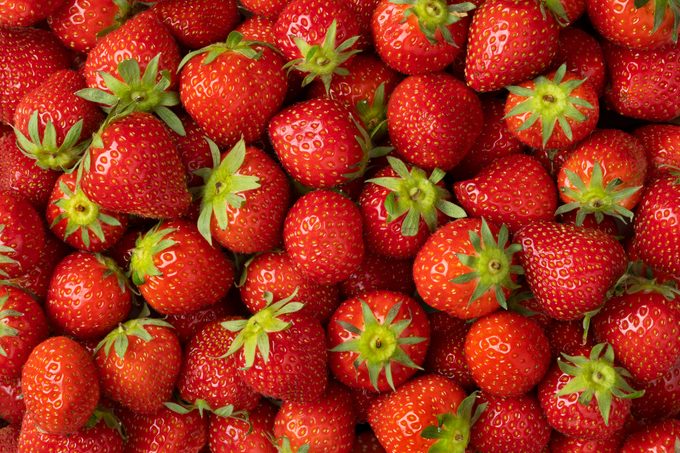How To Grow Strawberries
In many parts of the U.S., the unofficial beginning of summertime is marked by an annual strawberry festival in late May or early June. Who doesn’t love a bowl of strawberries and shortcake with a side of vanilla ice cream, whipped cream or both?
If you have a sunny garden, you can grow strawberries and enjoy your own strawberry festival every year.
Types of Strawberries
In general, there are three types of strawberries: June-bearing, day-neutral and everbearing.
- June-bearing: As the name suggests, these varieties, such as ‘AllStar,‘ produce one large crop of in late May or early June, depending on your USDA Plant Hardiness Zone. Berries tend to be bigger than those of day-neutral or everbearing varieties.
- Day-neutral: These produce strawberries steadily throughout the growing season and include varieties like ‘Seascape.‘
- Everbearing: These, like ‘Quinault,‘ produce a big crop in the spring, a few berries through the summer, then another crop in late summer or early fall.
How To Plant Strawberries
Strawberries grow best in full sun in rich, loamy, well-drained soil. They’re a perennial plant, so a little work ahead of time will keep strawberries growing and producing for several years.
- Prepare the garden by removing weeds, lightly cultivating the soil and adding organic matter. Consider a raised bed for strawberries, which helps ensure good drainage.
- Buy plants certified to be disease-free. Strawberry plants are often sold bare-rooted in early spring, or as plants growing in containers later in the spring. They can be planted a few weeks before your last frost date. Yes, before.
- Space plants at least 12 inches apart in rows far enough apart for you to walk through and harvest berries on both sides.
- Plant so the crown of the plant (the center growing tip) is above the soil, but the roots are covered.
How To Grow Strawberries

Watering
When newly planted, water deeply to ensure the roots don’t dry out. Established plants do best with about an inch of rain a week, so water during dry spells.
Fertilizing
The best way to know if your strawberry plants need additional fertilizer is to have your soil tested. If you decide to fertilize, choose a fertilizer labeled for use on fruits and vegetables. Avoid fertilizers higher in nitrogen, because that may encourage leaf growth and not flower production.
Thinning
Strawberry plants will produce runners with daughter plants on the ends. In the first year, remove some of these runners as they form to encourage the mother plant to grow bigger. You may also choose to remove some of the flowers that form for the same reason.
After the first year, when plants are established, leave the runners be. These will produce new plants that will grow on to produce berries in the second and third years.
Weeding
Keep your rows free of weeds by pulling them by hand or lightly cultivating, so you don’t disturb the roots of the strawberry plants.
Mulching
Adding mulch, such as straw or loose bark, around the strawberry plants helps to keep berries off the ground so they’re cleaner. To protect strawberry plants over the winter, cover with about two inches of clean straw or loose bark. Early in the spring, before plants begin to grow again, remove this mulch and spread under the plants as needed.
Protecting from birds
In some areas, nuisance birds will quickly find and peck holes in ripe berries. Cover your strawberry plants with netting to keep birds out.
Preventing plant diseases
In the home garden, providing good growing conditions goes a long way toward preventing disease and insect problems on strawberries. While insects are generally not a problem, diseases may be.
Buying certified disease-free plants is your first step toward prevention. Avoid planting where tomatoes, peppers or potatoes were; these may have had diseases that infect strawberries, too.
If you see dark spots or other signs of plant disease on the leaves, cut or shear back the leaves, then discard them in the trash. In many cases, this will slow the disease enough that you will still get strawberries to harvest. If diseases continue to be a problem, you may need to start a new row of strawberries elsewhere in the garden with new disease-free plants.
Encouraging pollinators
Strawberry flowers are pollinated by bees, so avoid insecticides that may kill bees. If your strawberries are small and misshapen, it may be because the flowers weren’t pollinated.
How to Harvest Strawberries
Homegrown strawberries are ripe and ready to pick when fully red. Harvest them in the morning, if possible, when they will be plump with moisture.
Pick the strawberry by pinching it off, leaving about a half-inch of the stem. Be careful not to damage the plants. Ripe berries will store longer if left unwashed. Wash before eating.
No comments